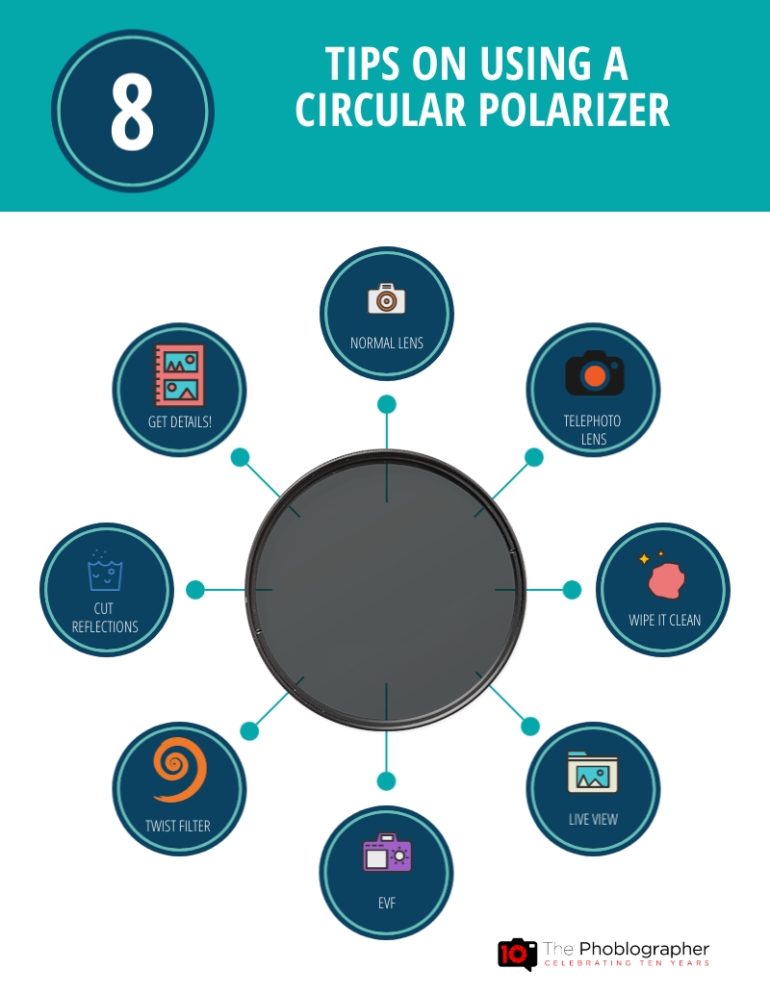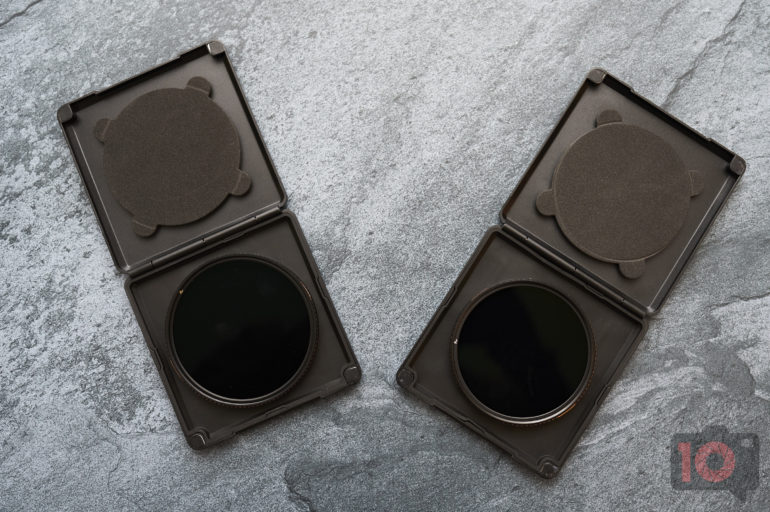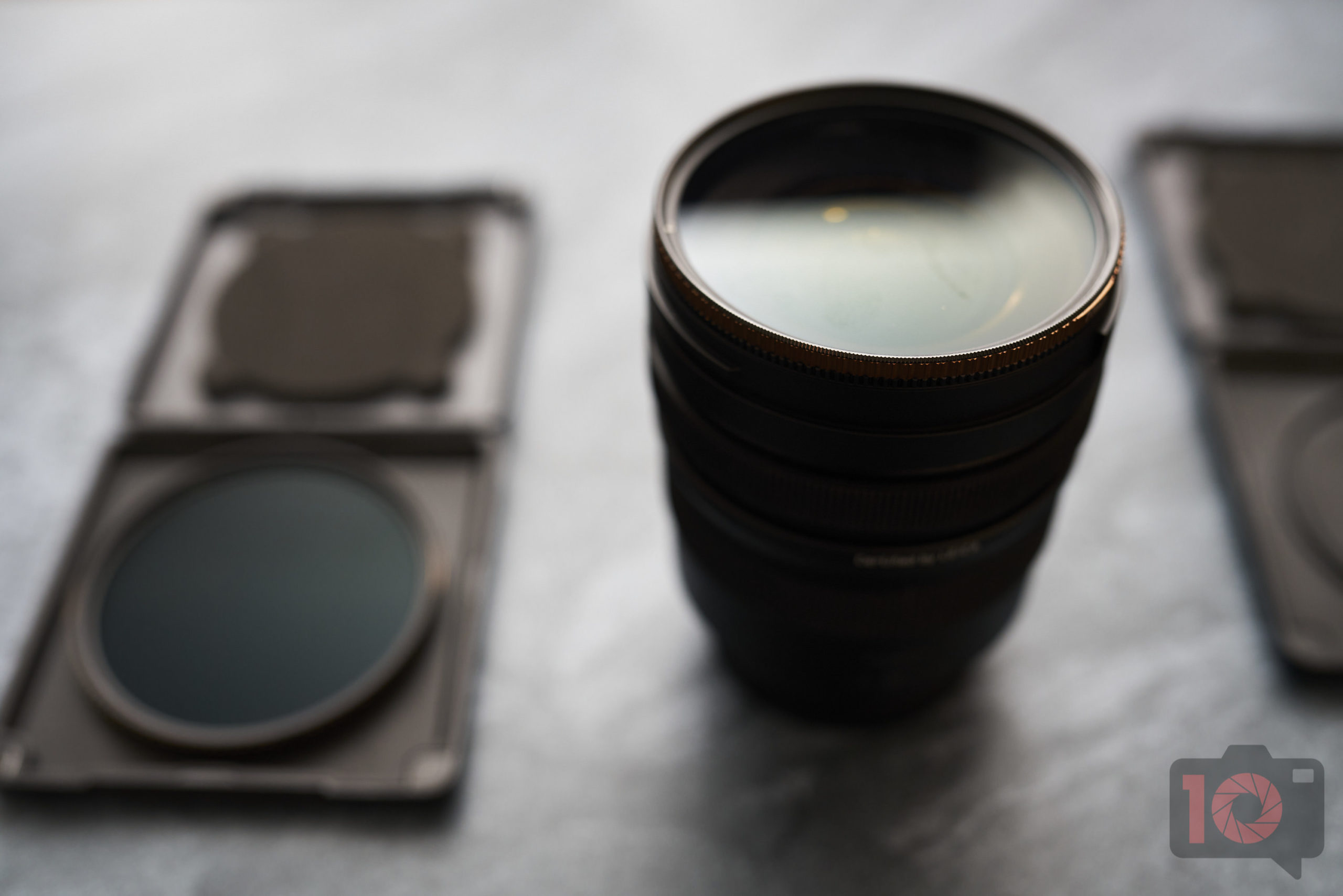If you’re wondering how to make the most of circular polarizers, we have just the photography cheat sheet for you.
Cameras, lenses, and photo editing software have become so good and advanced in the last decade that it may be hard for some to see the point of using tools like lens filters. However, there are actually a bunch of filters that prove useful even today because they help you nail the shots in-camera, saving time and effort in post-processing later. The circular polarizer is one such tool. Especially useful for landscape photography, this lens filter removes glare and reflections from bodies of water. If you’re new to using this accessory, we have a bunch of tips in today’s photography cheat sheet to get you started.
Our very own cheat sheet below is a quick reminder of all the things you can do with a circular polarizer, what you can use it with, and how to get the best results. As we mentioned in our Useful Photography Tip #199, this filter reduces the amount of light that reaches your sensor, but it also produces bolder colors apart from reducing reflections or slightly darkening the sky. These make it one of the accessories that every photographer must keep in their camera bag; you’ll never know when it comes in handy!

Essentially, you can use a circular polarizer with any lens, as long as it is available in the diameter of your lens (they need to be screwed on). An exception, however, is extreme wide-angle lenses. Because the effect is direction-specific, a bigger portion of the sky tends to be heavily polarized when using these lenses. As mentioned in this other circular polarizers cheat sheet, you can just get one in the largest filter thread and step-up rings for your smaller lenses. This way, whether it’s a normal lens or a telephoto lens, whatever the filter size, you’ll be able to use it just fine.
While you can look through the viewfinder to set the effect you’re after while rotating the filter, you can also check through your camera’s live view and electronic viewfinder (EVF). However, some photographers have also found it difficult to judge the effect of circular polarizers when shooting using the EVF. In a discussion on the Fuji X Forum, admin Arjay tells us that the EVF typically compensates for any change in brightness. This happens in two ways when you twist the filter: it changes the exposure when in auto exposure mode, or compensates for any changes in brightness in manual exposure mode. To work around this, you can either disable the exposure preview in manual exposure mode, half-press the shutter button to fix the exposure before rotating the filter in auto exposure mode, or lock the exposure before rotating the filter while in auto exposure mode.

Use the circular polarizer to capture details and elements that would otherwise be obscured by the reflection or glare on surfaces like water, metal, or glass displays. To enhance blue skies, remember to shoot at a right angle to the sun for the best results. How do you know you’re doing this right? Point your index finger at the sun and extend your thumb to form 90 degrees.
Liked these circular polarizer tips and tricks? Don’t forget to check out our photography cheat sheet collection to find more that will come in handy for your next shoot and projects!


